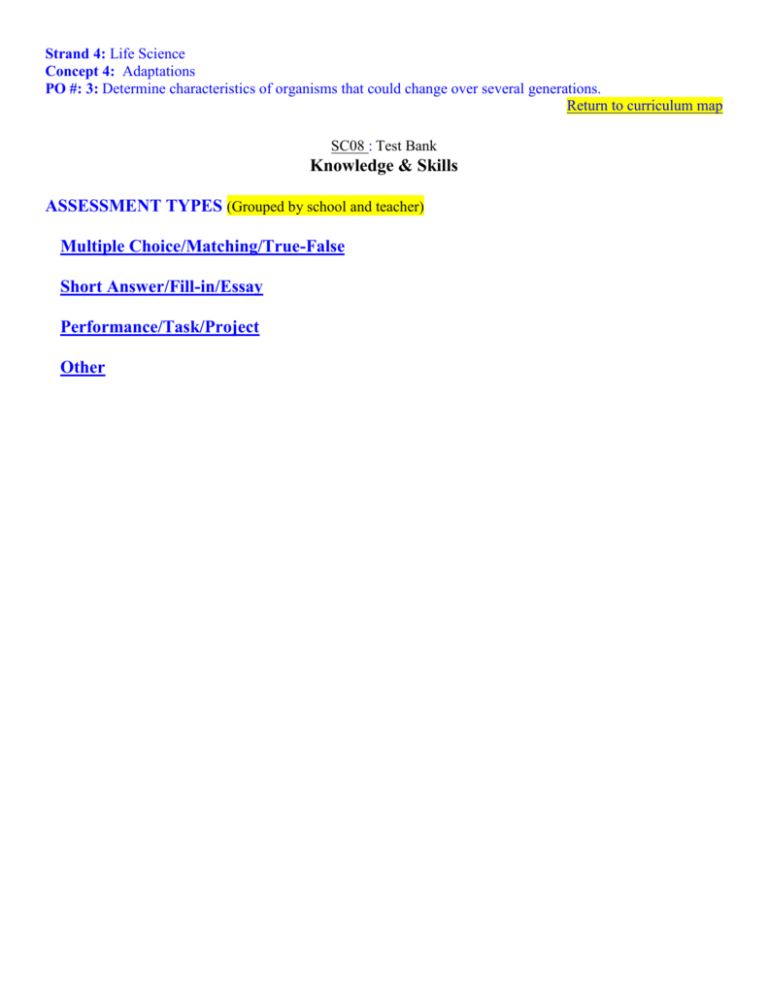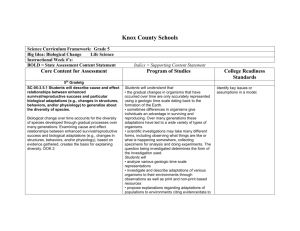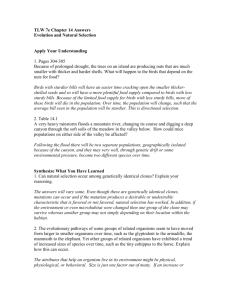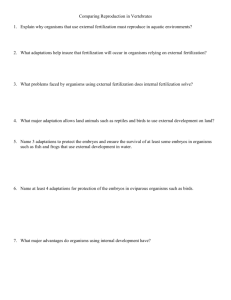Strand 4 Concept 2: HEREDITY (Life Science)
advertisement

Strand 4: Life Science Concept 4: Adaptations PO #: 3: Determine characteristics of organisms that could change over several generations. Return to curriculum map SC08 : Test Bank Knowledge & Skills ASSESSMENT TYPES (Grouped by school and teacher) Multiple Choice/Matching/True-False Short Answer/Fill-in/Essay Performance/Task/Project Other Strand 4: Life Science Concept 4: Adaptations PO #: 3: Determine characteristics of organisms that could change over several generations. Multiple Choice/Matching/True-False Rhodes – Little Ecology Vocabulary: Write the letter of the term that correctly matches its definition. A. ecosystem B. environment C. habitat D. natural selection 1. A decaying log is used as a home by termites 2. The weather conditions, amount of sunlight, availability of food, water, and land all affect a foxes’ daily life 3. The ocean has a lot of different plants, animals and non-living things that interact. 4. A moth reproduces and passes on it wing colors because its camouflage allowed it to survive. Shepherd – Code 1. The process by which organisms that are best adapted to their environment survive is A. emigration B. natural selection C. extinction D. mutation 2. Which of these contribute to the process of natural selection? A. diversity within species B. species over reproducing (too many offspring produced) C. limiting factors D. all of the above 3. Which of the following is the largest? A. population B. ecosystem C. community D. individual Fremont- McGee/Franklin 1. Which of the following is NOT one of the 4 parts to Natural Selection? a. over-production c. struggle to survive b. the energy pyramid d. successful reproduction 2. Which of the following is NOT an example of natural selection? a. people breeding horses to run faster b. bacteria populations becoming resistant to antibiotics c. insect populations developing resistance to certain pesticides d. male birds of certain species developing colorful feathers to attract female mates 3. The classic story to support the theory of Natural Selections comes from Manchester England. It is said that as the industrial revolution developed, the pollution affected the color of the bark of the tree. How was the moth population that lived in the forest affected by these changes? a. They got bigger because there was no competition for food. c. They became lighter colored to match the snow. Strand 4: Life Science Concept 4: Adaptations PO #: 3: Determine characteristics of organisms that could change over several generations. b. They got smaller because they could not find enough food. d. Lighter moths were easily spotted by birds and were eaten. So darker moths survived and reproduced. 5. When Darwin observed the finch populations on the Galapagos Islands, he noted that their environments were somewhat different and the birds were different sizes, colors, and their ____________________________ seemed to vary depending upon the food that they ate. a. wings b. beaks c. feet d. eyes Smith – Gratkins 1. What caused the shapes of the beaks of finches (native birds) in the Galapagos Islands to change over several generations? A. the birds wanted the new beak shape B. defending against predators caused changes in beak shape C. birds better adapted to the food available survived and reproduced offspring D. the original birds died and new finches moved in 2. Better adapted organisms will survive and reproduce more offspring than less well adapted organisms. After a period of time, this process will cause physical changes in the population. What is this process? A. competition B. ecology C. natural selection D. survival selection 3. Which is an example of natural selection? A. humans create a new breed of dog B. changes in food cause a change in bird beak shape over time C. insects die because they are sprayed with a bug killer D. a plant becomes inactive during winter months 4. The finch birds on Galapagos experienced changes in the types of food available. Over time, what physical characteristic may have changed? A. beak shape B. body size C. foot design D. wing design TOP _________________________________________________________________________________________ Strand 4: Life Science Concept 4: Adaptations PO #: 3: Determine characteristics of organisms that could change over several generations. Short Answer/Fill-in/Essay Rhodes – Little Short Response: Write the words that best complete each statement below. 1. Different organisms live in different habitats because ___. 2. If you compare an ecosystem to a habitat, you’ll find that ___ is smaller. 3. If organisms don’t adapt to their habitat, then they will ___. 4. If a species of animal doesn’t adapt to its habitat, then the species will eventually ___. TOP _________________________________________________________________________________________ Strand 4: Life Science Concept 4: Adaptations PO #: 3: Determine characteristics of organisms that could change over several generations. Performance/Task/Project TOP _________________________________________________________________________________________ Strand 4: Life Science Concept 4: Adaptations PO #: 3: Determine characteristics of organisms that could change over several generations. Other TOP _________________________________________________________________________________________








